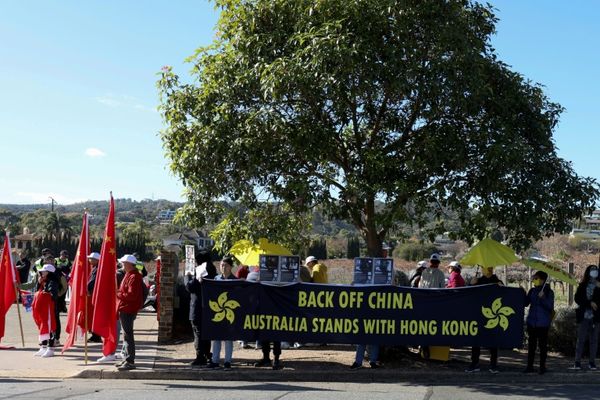
Oil is backing up through Russia’s energy supply chain and leading to a drop in crude-oil production, a blow to Moscow’s main economic engine as the war in Ukraine rages.
Refiners are trimming output and in some cases closing down because of falling demand at home and abroad. Storage space is running low in pipelines and tanks. Wells, which pump from some of the world’s biggest crude reserves, are dialing down production.
The losses so far are modest, and overall the industry continues to generate massive amounts of revenue for Moscow. But the problems of getting crude from the ground to end users are likely to mount in the coming months, traders and analysts say.
In the latest indication of problems ahead, the International Energy Agency forecast Wednesday that from May, almost 3 million barrels a day in Russian production will be turned off. That would reduce output to fewer than 9 million barrels a day, a larger pullback than other analysts have predicted.
The degree to which Russian output suffers depends on Moscow’s ability to find new buyers in Asia. Customers in the U.S. are steering clear and many of those in Europe are seeking alternative suppliers. The IEA said there was no indication yet that China is racing to import barrels being shunned by longtime buyers of Russian oil.
A sustained drop would undermine the prime driver of Russian growth just as sanctions are set to pitch the economy into a steep recession. “There is the risk you permanently lose some production potential," said Helge André Martinsen, senior oil analyst at DNB Markets.
Moscow has a lot riding on its oil-and-gas producers navigating the crisis. Revenues from Russia’s oil and gas sales made up 45% of the federal budget in 2021, according to the International Energy Agency. Russia will earn $12.1 billion from the oil it exported in March, the Institute of International Finance estimates.
Trouble struck Russia’s refining industry within days of the invasion, traders say. Overseas sales shrank when European importers sought alternative suppliers. The U.S. then banned Russian oil imports in early March.
Unable to find enough buyers for diesel, gasoline and other such products, Russia started running out of places to put them, prompting refiners to run at a slower pace. About 1.7 million barrels a day in refinery production were offline in the week through April 8, said Richard Joswick, head of oil analytics at S&P Global Commodity Insights. That is 70% more capacity offline than typical levels of inactivity during the spring maintenance season.
Among those to shut down having exhausted storage is TAIF-NK PSC, based in Tatarstan in western Russia, traders said. The company didn’t respond to requests for comment.
The chief executive of Lukoil PJSC, Russia’s second-largest oil company, wrote to Deputy Prime Minister Alexander Novak in late March to say storage was brimming with oil, according to a report by Russian newspaper Kommersant. CEO Vagit Alekperov asked to redirect fuel oil to power plants to avoid shutting refiners, according to the report.
A Lukoil spokesperson didn’t respond to requests for comment.
A decline in Russia’s refining industry would have big implications for the oil market. Before the war, Russia was the third-largest oil producer, after the U.S. and Saudi Arabia. It was the world’s biggest exporter, shipping 5 million barrels of crude and a related fuel known as condensate a day, alongside 2.9 million a day of refined products, especially diesel.
Europe is particularly dependent on Russian diesel and prices there leaped after the invasion. The rise added to existing pressures on consumers and businesses, and prompted governments in the U.K., France and elsewhere to reduce sales taxes for road fuels.
The U.S. and allies have agreed to release more than 100 million barrels from government reserves to curtail the runup in energy prices. The plan, combined with Covid-19 lockdowns in China, has quelled wild moves in energy markets that erupted after the invasion. Brent, the international benchmark, traded at $105.09 a barrel Wednesday, down 6.7% from a month earlier.
Difficulties in the refining industry are reversing through the energy industry and hurting Russia’s ability to produce crude—thick, black oil that hasn’t been processed into usable fuels.
The space to store oil appears to be dwindling in the state-owned Transneft PJSC pipeline network as less crude flows into refiners, traders and analysts say. Measuring how much crude is housed in the network is difficult. Many storage tanks in Russia have fixed or covered roofs, or are underground, so satellites can’t calculate the oil inside them by tracking the height of the roof, Mr. Joswick said.
A Transneft spokesperson didn’t immediately respond to request for comment.
With fewer places for their crude to go, Russian producers are cutting back. Output of crude and condensate has fallen to 10.5 million barrels a day, said Amrita Sen, co-founder of Energy Aspects. That is down from 11.1 million barrels a day before the Feb. 24 invasion and compares with global oil demand of roughly 100 million barrels a day.
If maintained through April, current losses would take Russian crude production back to levels from July 2021—before a series of output increases by OPEC+ designed to meet demand as it recovered from Covid-19, according to Lambert Energy Advisory.
It is too early to tell whether Russia’s energy industry will suffer lasting damage, analysts say. There are signs the country is adapting fast to lost demand in the West, sending more shipments of crude to Turkey and India among other countries.
Oil producers in Russia have recovered from setbacks in the past.
Output almost halved between 1987 and 1996 during the disintegration of the Soviet Union, according to a book on Russian oil by Thane Gustafson. Russia returned to the top table of oil-market players when Mikhail Khodorkovsky’s Yukos and Roman Abramovich’s Sibneft applied Western production and management techniques in the 2000s.
Still, sliding demand from Western companies adds to a separate challenge for giants Rosneft Oil Co. and Gazprom PJSC and their smaller rivals: Access to funding, machinery and parts.
Simpler components can be manufactured domestically or sourced from China. But some catalysts and sensors used in refineries are largely manufactured by U.S. and European companies, leading to concerns about not being able to access parts to keep refineries operating, said a person familiar with the Russian oil industry.







